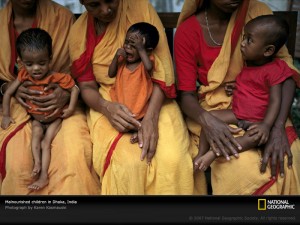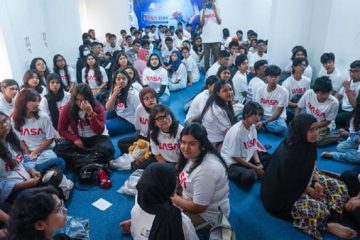 The United Nations Children’s Fund (UNICEF) on Thursday released a report which said most of the world’s 83 million chronically undernourished children under five are in South Asia.
The United Nations Children’s Fund (UNICEF) on Thursday released a report which said most of the world’s 83 million chronically undernourished children under five are in South Asia.
The report said 24 countries bear 80 percent of the global burden of under nutrition and the top five are- Afghanistan, Bangladesh, Pakistan, India and Nepal, Unicef sources here on Thursday said.
In the South Asian countries over 40 percent of their under five population suffer from under nutrition, the report titled- ‘Improving Child and Maternal Nutrition’ said.
According to the report in Bangladesh about 7.2 million children equivalent to 43 percent of total children under five are moderately or severely suffer from malnutrition.
The percentage is 59 in Afghanistan, 49 in Nepal, 48 in India and 42 in Pakistan, the report said.
Regional Director of Unicef for South Asia Daniel Toole said the paradox of South Asia is that despite healthy levels of economic growth in many countries, chronic under nutrition remains persistently and unacceptably high”.
The report was prepared based on recent survey data on global prevalence of under-nutrition. Children suffer from severe acute under nutrition are nine times more vulnerable to die than other children and may forever reduce ability to fight and survive diseases.
It said cutting under nutrition is entirely feasible. One- thousand day from before birth to two years age are the most critical for any child.
Breastfeeding within one hour of birth and exclusively for at least six months is the single intervention for child survival, the report said adding water and sanitation, salt iodization and vitamin-A supplementation are other ways to prevent the undesirable consequences.
Across South Asia, harmful cultural and traditional practices such as child marriage led to many women giving birth in young age.
They are told to eat less during pregnancy for easy and earlier delivery, the report found.
“As a result they become anemic and under nourished and have low weight babies, who may survive but not thrive,” the report observed.
Photo: science.nationalgeographic.com




















